Reminiscing During Clovid-19
The First Malaysia Branch Expedition - September 2007.
 |
Gymnodoris sp. 51 (page 81) Flabellina sp. 9 (pg 273) Dermatobranchus caeruleomaculatus
 |
Gymnodoris sp. 54 (page 82) Berthella sp. Facelinid sp. 3 (page 329)
 |
Goniobranchus sp. 28 (page 154) Kaloplocmus sp. 1 (page 30) Phyllodesmium sp.Page numbers refer to Nudibranch and Sea Slug Identification, 2nd edition.
I had been asked to take a group of divers to explore somewhere in the South China Sea - what an opportunity. My sponsor suggested - "How about a Nudibranch expedition to an area rarely, if ever, dived." I said "Yes" I'd do it - let's go to Peninsular Malaysia in search of undiscovered sea slugs, and set off to invite a list of scientist/diver/photographers par excellance
Back Row L-R: Jerry Allen, Jeff Davies, Kevin Lee, Jeff Holmes, Dr. D.B. Koh
Front Row L-R: Terry Schuller, David Behrens, Laura Losito., Dr. Terry Gosliner, Constantinos Petrinos,
Bruce and Johanna Wight
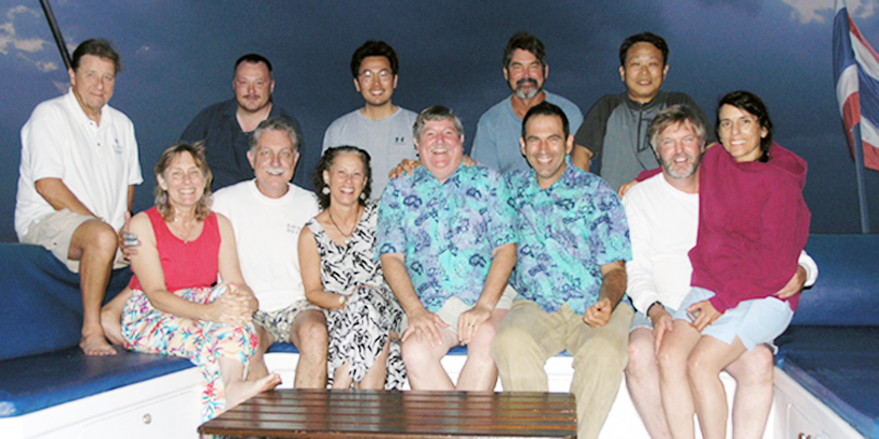
|

|
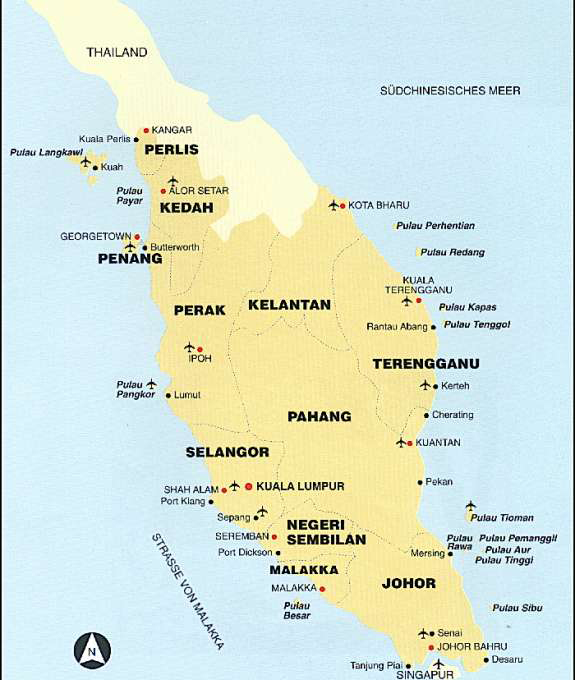
|

|

|
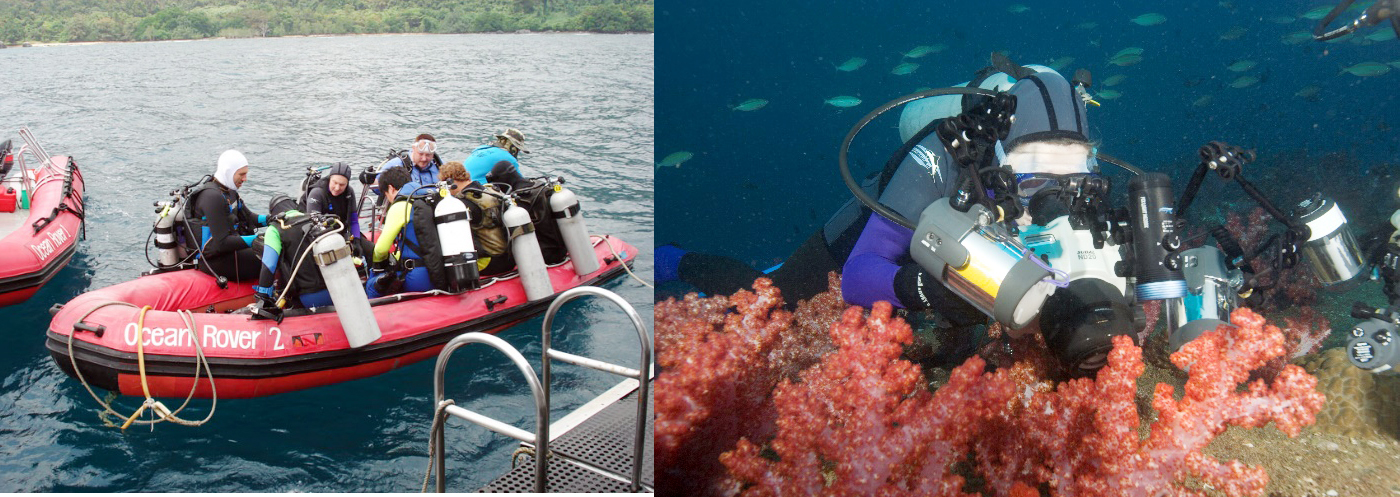
|
Photos of our daily routine - Dive, photograph and collect, review each dives findings and document everything.
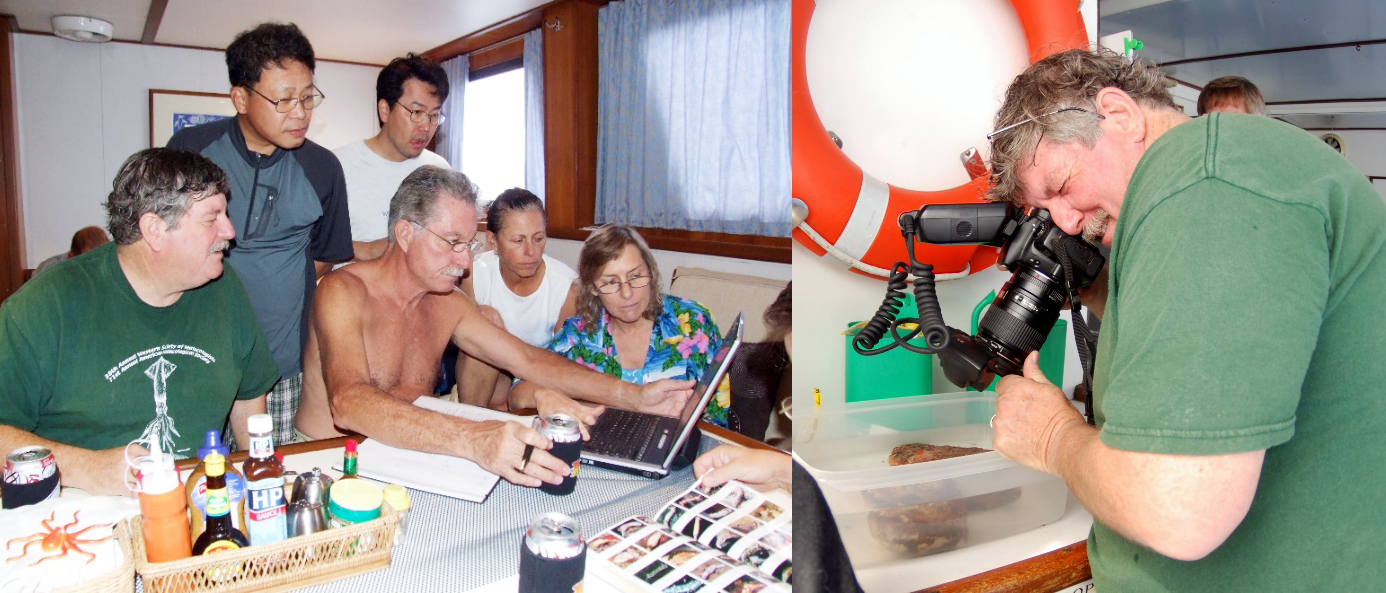
|
Diving areas never dived by serious scientists and photographers was very rewarding. Each time we submerged we knew we were about to find species we knew little about and be able to observe new behaviors and aspects of their ecology. Each of us had a different style for combing the reefs searching for new finds. This made the diversity of our observations truly amazing. Since returning, about a dozen of the species collected have now been named, including: Dermatobranchus caeruleomaculatus (and top row, right above), as well as a new Phyllodesmium (sorry no photo). Terry's crew at the California Academy of Sciences continue to grind out new descriptions, even during this Pandemic, when their laboratories stand empty.
The waters on Peninsular Malaysia were not the only home to freaky, wonderful new critters. On a day's hike to a jungle waterfall, on Pulau Tioman, for a quick, refreshing dip, we came across this amazing creature resembling a prehistoric Trilobite. What the heck was it? We took back a specimen and once home Terry identified it as the larvae of a beautiful Lycid, net-winged beetle larvae, of the genus Duliticola sp. Fantastic.
The Trilobite critter found on our hike to the Tioman falls. Duliticola sp., larva & adult.

|
I think it is safe to say that this First Ever Malaysia Branch Expedition surpassed everyone's expectations and helps enforce Peninsular Malaysia's standing as a prime location for diver's keen to expand their critter knowledge. Hopefully, we can return someday after the Old Normal returns.
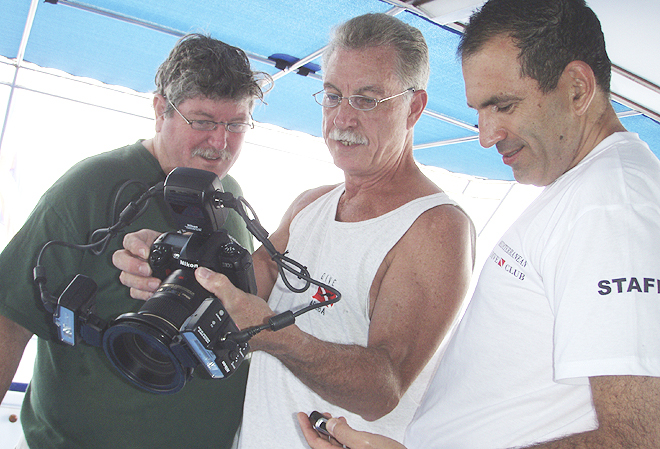
|
Dave Behrens
Sammamish, WA 98074
Nov., 2020
Send Dave email at davidwbehrens@gmail.com

Attention all you Sluggers, and you know who you are! The NSSI 2nd edition is now available in ebook PDF and book form . The hard back version will become available Nov. 1st. Both will cost $65 (individually). You will need to jump through a few hoops to get the electronic version as pdf distribution is protected by Adobe ID!! Please read the following to enable reading your electronic purchase! This new 2nd Edition is updated and reorganized, including 185 new species. Among other features, the new edition includes additional photographs of species, an identification key, and an up-to-date classification reflecting the latest evolutionary relationships. The Indo-Pacific represents the largest expanse of tropical ocean in the world, stretching from the Indian Ocean coast of southern Africa and the Red Sea to the central Pacific of the Hawaiian Islands, Easter Island and the Marquesas. This region supports the most diverse marine fauna of any place in the world for most groups of marine organisms. The nudibranchs and sea slugs are no exception to this rule; there are about 3,000 described species of these organisms in the world and at least 40% of these have been found exclusively in the Indo-Pacific tropics. This book illustrates 2,138 Indo-Pacific nudibranchs and sea slugs, including many undescribed species.
|

|
